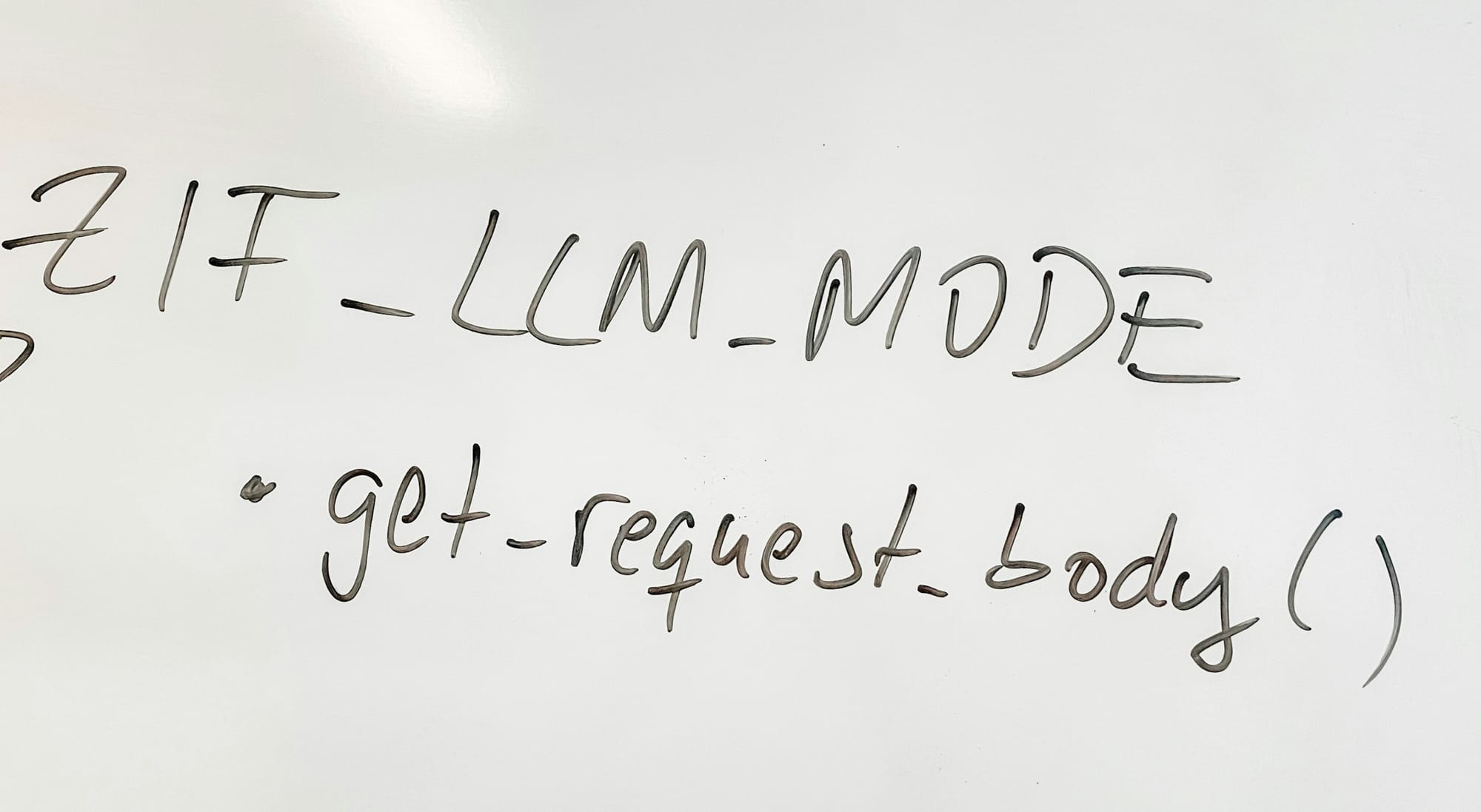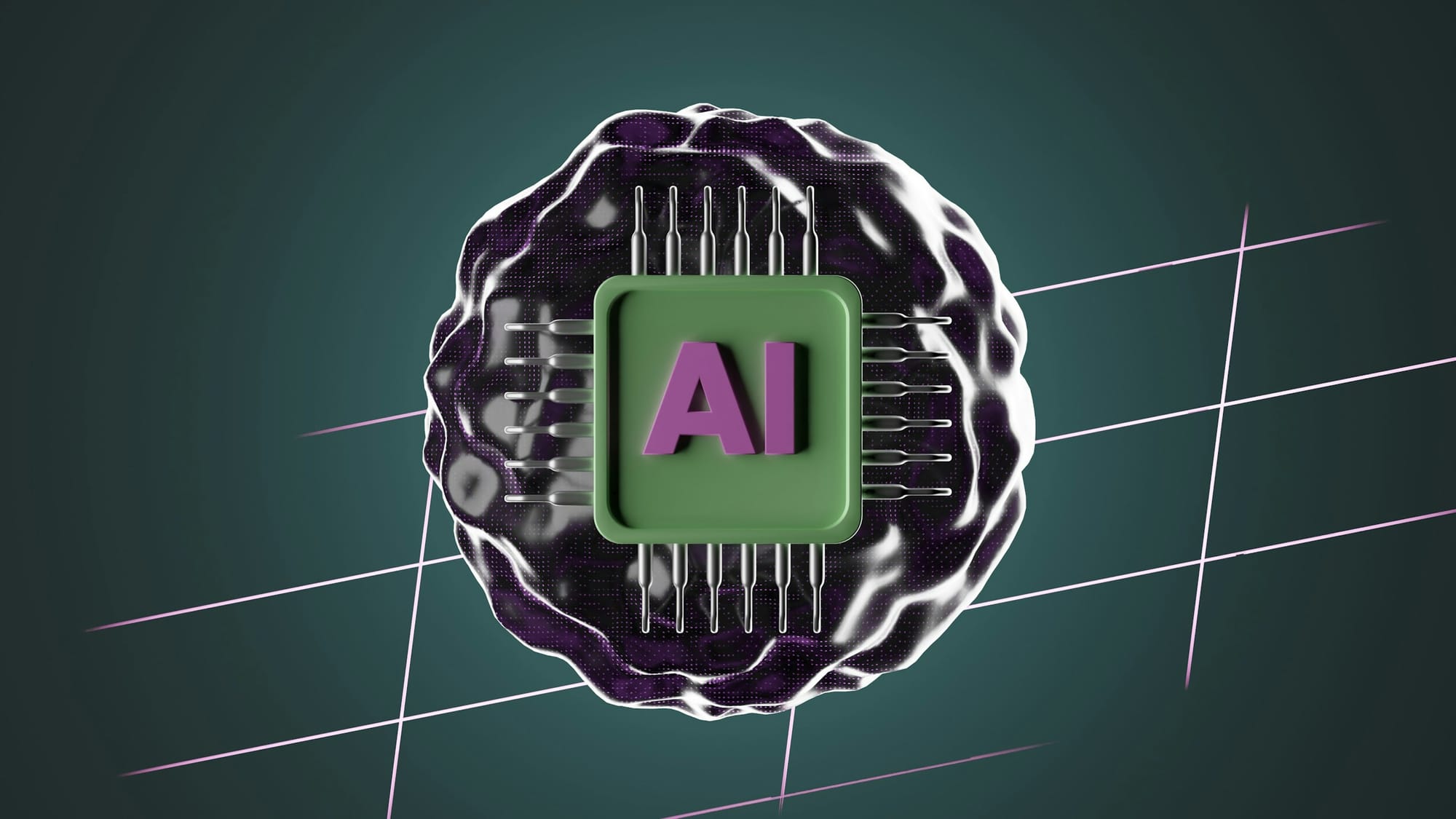Imagine building a new house. You have to decide on the materials you’ll use for the foundation and the framing before you can even think about the finishing touches. Maybe you’ll go with wood for both. Or perhaps you’ll choose a concrete block foundation and wood framing. Either way, you’ll likely have a better home if you understand the differences between these options and how they’ll work together. Similarly, suppose you’re developing a product that leverages AI. In that case, you might consider how large language models and natural language processing will enhance your application before you start coding. While they can operate independently of each other, understanding the differences between LLMs and NLP and how they complement each other can significantly improve your project’s outcome. This article will clarify the differences between multimodal LLM and NLP and examine how they can elevate AI functionality, performance, and user experience.
If you’re looking for a way to enhance your product’s AI capabilities, Lamatic’s Generative AI tech stack can help you seamlessly integrate LLM and NLP technologies to achieve your goals.
Is NLP the Same as LLM?

Natural Language Processing (NLP) and large language models (LLMs) are fundamentally different. Both have their benefits, but they work in different ways. NLP is the broader field of study and technology concerned with enabling computers to:
- Understand
- Interpret
Generate human language. LLMs are a specific type of NLP model focused on large-scale learning from vast text datasets to perform language tasks. While NLP is an umbrella term that encompasses various approaches to processing human language, LLMs represent a more advanced and specialized subset.
What are LLMs?
An LLM is an AI system that generates human-like text based on vast training data. These models, which evolved from earlier machine learning models and algorithms, use complex structures called transformers to process and produce language.
Introducing models such as Bidirectional Encoder Representations from Transformers (BERT) and OpenAI’s ChatGPT marked significant advancements in this field. LLMs can handle various linguistic tasks, from translating languages to generating informative and coherent text. Some specific features of LLMs include:
Scalability
LLMs can scale effectively to use larger datasets, which improves their outputs’ accuracy.
Adaptive Learning
LLMs keep learning and adapting to new data even after initial training, enhancing their ability to generate relevant and timely content.
Text Generation
LLMs can generate text that mimics human writing styles, useful in content creation, marketing, and entertainment. LLMs’ generative AI abilities surpass those of basic NLP systems, whose outputs are typically shorter and simpler.
Software Integration
LLMs can integrate into software applications for many use cases, including customer service chatbots, healthcare decision-making, virtual assistants, and interactive storytelling.
Better Dialogue Simulation
LLMs are good at simulating human-like conversations, including managing dialogue turns, remembering past interactions, and generating contextually relevant responses in real time. However, simpler NLP frameworks usually limit these capabilities.
Complex Question Answering
LLMs can handle intricate question-and-answer tasks by synthesizing information from various segments of texts to generate complex responses, going beyond simple keyword matching typically seen in basic NLP systems.
Cross-Domain Knowledge
Due to their extensive training across wide-ranging datasets, LLMs can integrate knowledge from multiple domains into single outputs. This lets them generate responses referencing a broader range of information than NLP systems, usually limited to narrower domains.
What is NLP?
NLP is a subfield of artificial intelligence (AI) that helps computers understand and generate human language. In the mid-20th century, NLP was a simple rule-based way to translate text between languages. Over the decades, NLP models’ capabilities have advanced far beyond basic text translation.
NLP technologies have many uses today, from search engines and voice-activated assistants to advanced content analysis and sentiment understanding. This expansion is largely due to AI’s ability to process and analyze large datasets quickly and more accurately, which helps NLP do more sophisticated and context-aware analysis. There are two main types of NLP models:
- Rules-based: Rules-based models process language using predefined linguistic rules
- Statistical (machine learning): Models use statistical methods to learn from data and make predictions.
Some of the key features specific to NLP include:
Syntax Analysis
NLP analyzes the arrangement of words in a sentence to figure out grammatical structure, which helps computers understand how sentences are constructed.
Semantic Analysis
This allows NLP systems to discern the meanings of sentences by examining word relationships and sentence context, which is crucial for tasks such as language translation and content recommendation.
Named Entity Recognition (NER)
NLP identifies and classifies key elements from text into predefined categories such as names of people, organizations, locations, expressions of times, quantities, monetary values, and percentages.
Coreference Resolution
This involves finding all expressions that refer to the same entity in a text, which is necessary for understanding pronouns and other referring expressions in documents.
Sentiment Analysis
NLP can determine the sentiment behind statements by evaluating the tone and context of text data, which is useful for monitoring social media and customer reviews.
Topic Segmentation and Recognition
NLP tasks divide text into segments and recognize the topic of each segment to improve content discovery and navigation.
Speech Recognition
This transforms spoken language into text and is widely used in smartphones and voice-driven assistance systems.
Use Cases for Large Language Models (LLMs)
LLMs are powerful tools, but where do they truly shine? From content generation to multi-lingual automation, here’s how LLMs can elevate your AI projects.
Content Generation and Summarization
LLMs excel at generating large amounts of coherent, high-quality content. They are widely used for:
- Blog posts
- Reports
- Creative writing
LLMs also outperform traditional methods in summarization tasks, such as condensing long articles or research papers.
Conversational AI and Chatbots
These models drive advanced conversational LLM agents like virtual assistants and customer service bots. Their skill in understanding and generating natural language responses makes them perfect for building chatbots that can manage complex conversations with little supervision. “LLMs are resource-intensive, but their potential to enhance user interactions and redefine chatbot technology is immense. LLMs can take automated communication to the next level for businesses aiming to improve customer engagement.” Tomasz Borys, Senior VP of Marketing & Sales, Deep Sentinel
Complex Text Analysis
LLMs can process and analyze complex text, making them perfect for legal, healthcare, or finance industries. These models can sift through long, technical documents and extract key insights without requiring a specific training set for each domain.
Automation in Multilingual Contexts
LLMs can understand and generate text in multiple languages thanks to their training on diverse datasets. This makes them an excellent choice for applications with essential multi-lingual support, such as global customer support or content creation for international audiences.
Optimize Your LLM With Expert Fine-tuning Services
Whether you're working with complex language data, need multilingual support, or require deep insights into specialized fields, we fine-tune your LLM to adapt it to your requirements.
Use Cases for Traditional NLP
When discussing traditional NLP vs LLM, the former is perfect for specialized, rule-based tasks. Let’s explore where NLP excels, from text classification to domain-specific applications.
Rule-Based and Domain-Specific Tasks
Traditional NLP models are perfect for tasks requiring specific rules or patterns. For example, NLP's precision excels in email filtering, spam detection, and keyword extraction. NLP is cost-effective if your task involves structured text or well-defined patterns.
Text Classification, Entity Recognition, and Search
NLP is often used for tasks like text classification, sentiment analysis, or document organization. Named entity recognition (NER) helps find important terms like names, places, or organizations in text. NLP models are also highly effective for search engine algorithms, where precision and relevance matter the most.
Lightweight Applications
If you're working with limited computational power, NLP is ideal. These lightweight models can run efficiently on standard hardware or mobile devices, making NLP suitable for companies or projects with smaller budgets or resource constraints.
Customization for Niche Domains
NLP models can be tailored to specific industries or tasks. They work well in highly specialized fields like medical terminology processing, legal document analysis, or customer support, where industry-specific language needs to be understood.
Related Reading
- LLM Security Risks
- What is an LLM Agent
- AI in Retail
- LLM Deployment
- How to Run LLM Locally
- How to Use LLM
- LLM Model Comparison
- AI-Powered Personalization
- How to Train Your Own LLM
Comparative LLM vs NLP Analysis

While Natural Language Processing encompasses many models and techniques for processing human language, large language models (LLMs) represent a specific model within this domain. However, in practical terms, LLMs exhibit a similar scope to traditional NLP technology regarding task versatility. LLMs have demonstrated the ability to handle almost any NLP task, from text classification to machine translation to sentiment analysis, thanks to their extensive training on diverse datasets and advanced understanding of language patterns.
LLMs' adaptability stems from their design, allowing them to understand and generate human-like text, making them suitable for various applications traditionally relying on specialized NLP models. For example, while NLP uses different entity recognition and summarization models, an LLM can perform all these tasks with a single underlying model. However, they are only sometimes the most efficient or effective choice for every NLP task, especially when specific, narrowly focused solutions are required.
Techniques: Understanding the Difference Between LLMs and NLP Methods
NLP uses various techniques, ranging from rule-based methods to machine learning and deep learning approaches. These techniques apply to various tasks, such as part-of-speech tagging, named entity recognition, and semantic role labeling. LLMs primarily use deep learning to learn patterns in text data and predict text sequences. They are based on a neural network architecture known as Transformer, which uses self-attention mechanisms to weigh the importance of different words in a sentence. This allows them to understand the context better and generate relevant text.
Performance on Language Tasks: LLMs vs NLP Models
LLMs have achieved remarkable results, often outperforming other types of models on a variety of NLP tasks. They can generate human-like text that is contextually relevant, coherent, and creative. This has led to their use in various applications, from chatbots and virtual assistants to content creation and language translation.
Limitations of LLMs
LLMs have their limitations. They require massive amounts of data and immense computing power to train. As they learn from the data they are fed, they can also be prone to generating inaccurate, unsafe, or biased content. These models do not understand the broader context or moral implications without specific guidance.
Versatility of NLP Techniques
NLP encompasses a wider range of techniques and models, some of which may be more appropriate for certain tasks or applications. Traditional NLP models can often solve natural language problems more accurately and with lower computational resources than LLMs.
Resource Requirements: How Do LLMs and Traditional NLP Models Compare?
LLMs need a significant amount of data and computational resources to function effectively. This is primarily because they are designed to learn and infer the logic behind the data, which can be a complex and resource-intensive task. LLMs train on massive datasets and have many parameters in the billions or hundreds of billions for state-of-the-art models. As of this writing, training a new LLM is highly expensive and outside the reach of most organizations.
Most NLP models can train on smaller datasets relevant to their problem area. In addition, many NLP models are available that are pre-trained on large text datasets, and researchers developing new models can leverage their experience using transfer learning techniques. Regarding computational resources, simple NLP models such as topic modeling or entity extraction require a tiny fraction of the resources needed to train and run LLMs. Complex models based on neural networks require more computational resources, but in general, compared to LLMs, they are much cheaper and easier to train.
Adaptability: Can LLMs Replace Traditional NLP Models?
LLMs are highly adaptable because they are designed to learn the logic behind the data, making them capable of generalizing and adapting to new situations or data sets. This adaptability is a powerful feature of LLMs as it allows them to make accurate predictions even when faced with data they haven’t seen before. Traditional NLP algorithms are typically less flexible. While NLP models can be trained to understand and process a wide range of languages and dialects, they can struggle when faced with new tasks or problems or even language nuances or cultural references that they haven’t explicitly been trained on.
Ethical and Legal Considerations: Do LLMs Have Greater Risks Than Traditional NLP Models?
Ethical and legal considerations are crucial in using both LLM and NLP. For LLMs, these considerations often revolve around data use.
Since LLMs require a significant amount of structured data, serious privacy and security concerns exist. It’s crucial for organizations training or using LLMs to have strict data governance policies in place and to comply with relevant data protection laws.
Addressing Safety Concerns: The Societal Risks of Advanced AI Systems
Another primary concern is about the safety of AI systems based on LLMs. The exponential improvement in performance and capabilities of LLM models and the stated goal of many in the industry to improve their abilities until they achieve artificial general intelligence raises major societal and existential concerns for humanity.
Many experts are concerned that bad actors could use LLMs to conduct cybercrime, disrupt democratic processes, and even cause AI systems to act against humanity's interests.
Ethical and Legal Challenges in Natural Language Processing (NLP)
In the case of NLP, ethical and legal considerations are more straightforward but still significant. Since NLP often processes and analyzes human language, issues such as consent, privacy, and bias can arise. For example, if NLP is used to analyze social media posts, there could be issues related to consent and confidentiality. If the training data used for NLP contains biases, these biases could be replicated in the NLP’s outputs.
Related Reading
- How to Fine Tune LLM
- How to Build Your Own LLM
- LLM Function Calling
- LLM Prompting
- What LLM Does Copilot Use
- LLM Evaluation Metrics
- LLM Use Cases
- LLM Sentiment Analysis
- LLM Evaluation Framework
- LLM Benchmarks
- Best LLM for Coding
Enhancing AI through NLP and LLM Integration

Fusing NLP and LLMs is a significant leap forward in developing advanced language processing systems. This collaboration combines NLP’s precise capabilities with LLM’s expansive contextual knowledge. It can also significantly improve AI applications’ efficiency and effectiveness across industries.
Why Does NLP and LLM Integration Work So Well?
Integrating NLP with LLM technologies offers several key advantages:
Enhanced Accuracy and Contextual Understanding
Merging NLP’s targeted processing strengths with LLM’s wide-ranging contextual comprehension improves accuracy and relevance in executing language tasks.
Resource Optimization
NLP's efficiency in specific task processing complements LLMs’ resource-intensive nature. It leads to scalable solutions and better allocation of computational resources.
Increased Flexibility and Adaptability
Combining these technologies enhances AI applications' flexibility and adaptability, making them more responsive to evolving requirements.
Real-World Integration Success Stories
Various successful applications have demonstrated the collaborative potential of NLP and LLM. Let’s take a look at how this synergy can revolutionize AI applications:
Healthcare
IBM Watson interprets vast amounts of medical data using NLP and LLM. It combines NLP’s precision in extracting specific information with LLM’s ability to understand broader contexts, enabling insightful diagnosis and treatment recommendations.
Finance
The collaboration between Bloomberg and Johns Hopkins University resulted in BloombergGPT. This model was trained on extensive datasets to excel in various financial tasks. It aids with research scaling, information extraction, decision-making alignment, bias identification, and risk management.
E-commerce
Amazon Comprehend leverages this integration to analyze customer interactions, reviews, and support inquiries. This allows businesses to understand customer behaviors and preferences more deeply, improving product searches, recommendations, customer support, and overall satisfaction.
Predicting the Future of NLP and LLM Collaboration
The continued integration of NLP and Large Language Models will unlock new capabilities and applications. It will influence how we interact with AI technologies:
Enhanced AI Assistants
Thanks to the integration of NLP and LLM, future AI assistants will likely exhibit advanced understanding and responsiveness to complex human interactions.
Innovations in Automated Content Creation
Combining NLP’s linguistic rules and LLM’s creative capacities promises more sophisticated content-creation tools.
Improved Language Understanding in Robotics
This synergy could significantly enhance robotics’ language processing abilities, leading to more natural and effective human-robot interactions.
Start Building GenAI Apps for Free Today with Our Managed Generative AI Tech Stack
There's a new way for businesses to build generative AI applications: with Lamatic. Lamatic offers a managed generative AI tech stack that empowers teams to rapidly implement GenAI solutions without accruing tech debt.
Our solution provides:
- Managed GenAI Middleware
- Custom GenAI API (GraphQL)
- Low Code Agent Builder
- Automated GenAI Workflow (CI/CD)
- GenOps (DevOps for GenAI)
- Edge deployment via Cloudflare workers
- Integrated Vector Database (Weaviate)
Our platform automates workflows, ensuring production-grade deployment on edge and enabling fast, efficient GenAI integration for products needing swift AI capabilities.
Start building GenAI apps for free today with our managed generative AI tech stack.





